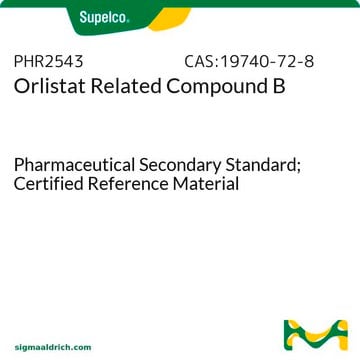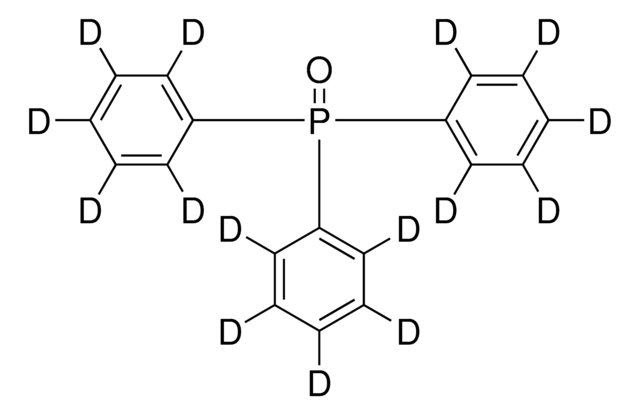T84603
Triphenylphosphine oxide
98%
Sinónimos:
Ph3PO, TPPO, Triphenyl phosphorus oxide, Triphenylphosphine monoxide
About This Item
Productos recomendados
assay
98%
reaction suitability
reagent type: ligand
reaction type: Coupling Reactions
reagent type: ligand
reaction type: Epoxidations
reagent type: ligand
reaction type: Michael Reaction
mp
150-157 °C (lit.)
functional group
phosphine oxide
SMILES string
O=P(c1ccccc1)(c2ccccc2)c3ccccc3
InChI
1S/C18H15OP/c19-20(16-10-4-1-5-11-16,17-12-6-2-7-13-17)18-14-8-3-9-15-18/h1-15H
InChI key
FIQMHBFVRAXMOP-UHFFFAOYSA-N
¿Está buscando productos similares? Visita Guía de comparación de productos
Application
- As a catalyst in Appel-type chlorination reaction of acyclic primary and secondary alcohols.
- As a catalyst in stereoselective poly and dibromination of α,β-unsaturated esters and β,γ-unsaturated α-ketoester compounds.
- As a promotor in the diastereoselective synthesis of α-ribofuranosides through ribofuranosylation of alcohols with ribofuranosyl iodides.
signalword
Warning
hcodes
Hazard Classifications
Acute Tox. 4 Oral - Aquatic Chronic 3
Storage Class
11 - Combustible Solids
wgk_germany
WGK 2
flash_point_f
356.0 °F
flash_point_c
180 °C
ppe
dust mask type N95 (US), Eyeshields, Gloves
Certificados de análisis (COA)
Busque Certificados de análisis (COA) introduciendo el número de lote del producto. Los números de lote se encuentran en la etiqueta del producto después de las palabras «Lot» o «Batch»
¿Ya tiene este producto?
Encuentre la documentación para los productos que ha comprado recientemente en la Biblioteca de documentos.
Los clientes también vieron
Nuestro equipo de científicos tiene experiencia en todas las áreas de investigación: Ciencias de la vida, Ciencia de los materiales, Síntesis química, Cromatografía, Analítica y muchas otras.
Póngase en contacto con el Servicio técnico









